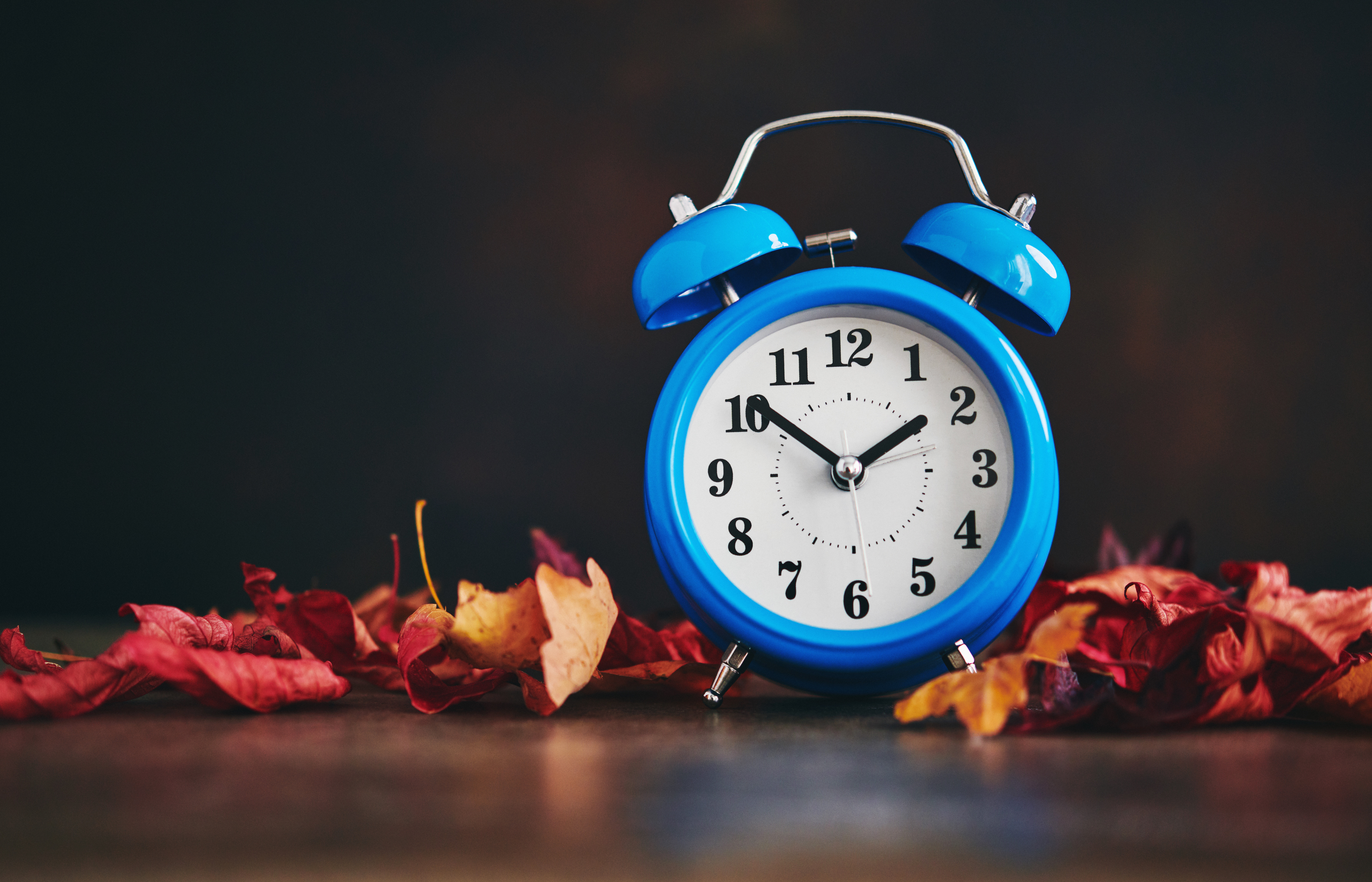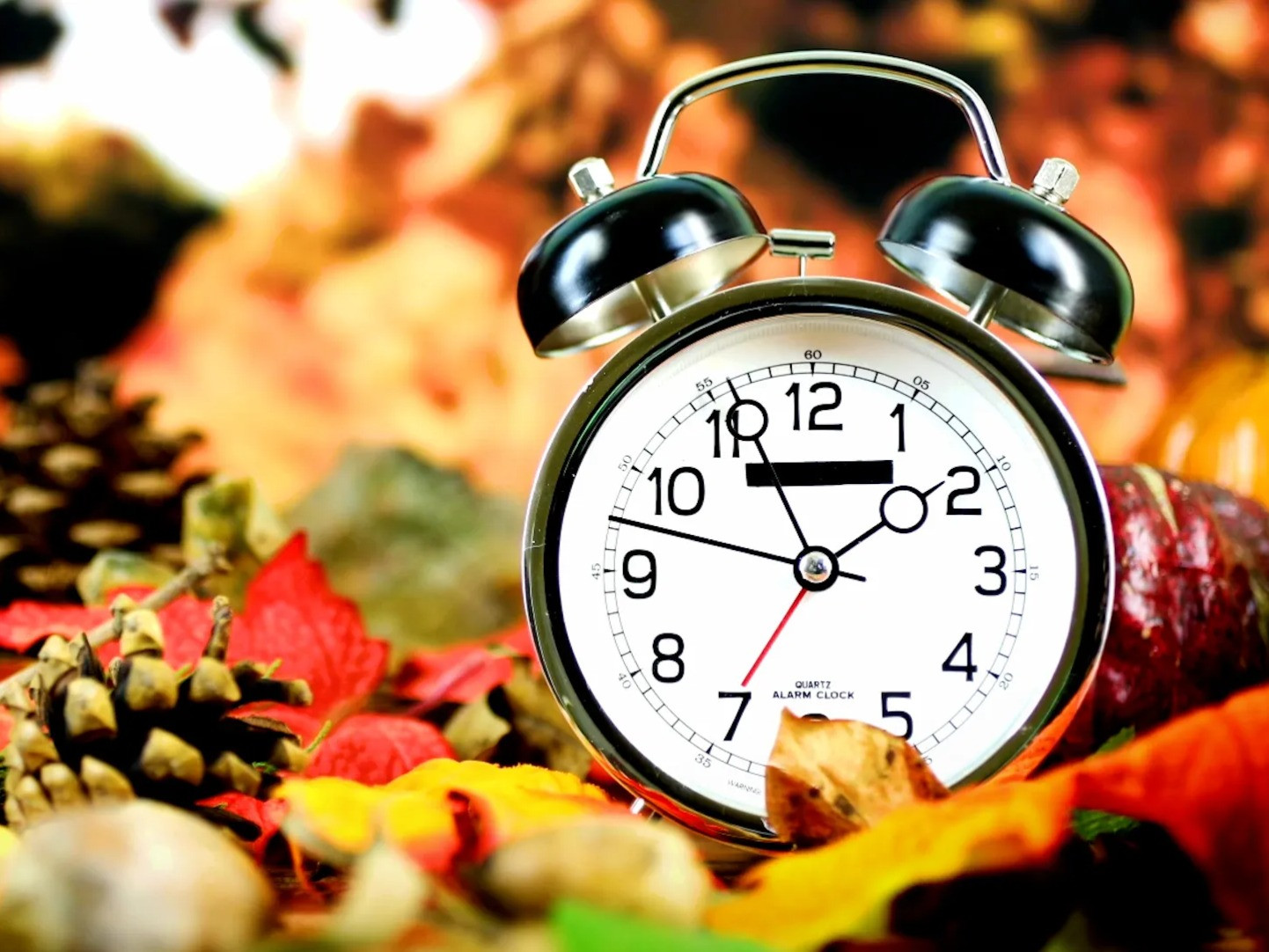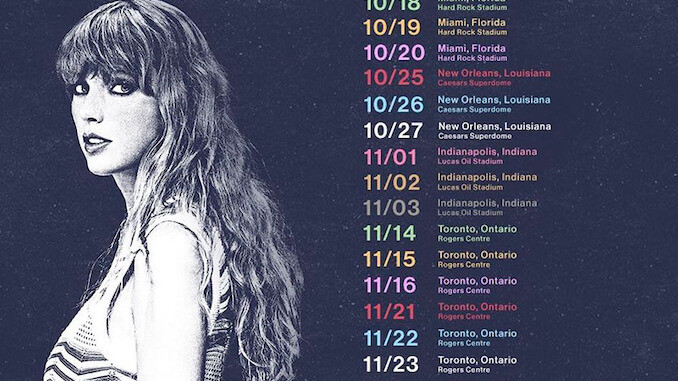On Sunday, November 3, remember to set your clocks back one hour. Also consider some helpful tips to get you ready for the time change.
As the last traces of summer fade and fall’s embrace tightens, the end to Daylight Saving Time gifts some of us the luxury of an extra hour of sleep. On Sunday, November 3, remember to set your clocks back one hour. Also consider taking the following precautions for the colder months ahead.
Prepare for the Shorter Days
As daylight hours shorten this time of year, it can be more challenging to see on our roads. Whether you’re walking, cycling or driving, remember to be aware and stay alert to prevent collisions. If you’re driving, ensure your full headlights are on when it’s dark. Be aware of the posted speed limit and watch for pedestrians and cyclists, especially when turning. Other travellers should use designated crosswalks or crossrides where possible to cross the road. Cyclists and people on scooters must have lights and reflectors on.
Home Safety Tips
Smoke and Carbon Monoxide Alarms
Check your smoke and carbon monoxide alarms are working properly. Test them by pushing the test button and vacuum them to remove dust particles. Smoke and carbon monoxide alarms can lose their effectiveness over time, so if yours are expired, purchase a new one at your local home and building store. You can also change batteries once a year when you hear the low-battery warning beep. Your smoke alarms can be upgraded to newer models with longer battery life, so you don’t have to worry about replacing the batteries for a few years.
Dryer Hose Cleaning
It’s a good time to clean your dryer hose to prevent fires. Cleaning your lint filter, emptying or replacing your dryer hose and regularly checking the vent and exhaust can help prevent fires. While you’re at it, check that both your fireplace and chimney are cleaned and inspected. Clogged chimneys can cause house fires and carbon monoxide poisoning. Make sure your chimney flue works so you don’t experience drafts.
Home Maintenance Tips
Storm Drains
Ensure that stormwater (rain and melted snow) can flow freely from your roof. Clear home stormwater drainage infrastructure of garbage, debris or leaves that block the flow of water away from your home. This includes eavestroughs, downspouts and private storm drains on driveways or your backyard. Leaves that collect on roadside storm drains can prevent rainwater from draining. Leaves can be put in yard waste bags at the edge of the boulevard for disposal. Dry leaves can be mulched directly on your lawn to add nutrients back into your soil. If possible, safely clear storm drains with a rake or broom. Blocked storm drains can be reported to 311.
Pools and Spas
Pool chemicals harm downstream creeks. Stop adding chemicals to the pool or spa for seven to 10 days and neutralize the pH before draining the water. Leave the cover off to allow sunlight to break down the chlorine. On dry days only, drain water slowly onto your lawn or by a hose long enough to reach the street. Saltwater pools, which contain high levels of salt (sodium chloride), should be slowly drained using a garden hose into a sanitary drain like a basement floor drain, sink or shower. Monitor this discharge closely to avoid a backup.
Eavestroughs and Downspouts
Ensure that eavestroughs, downspouts and basement window wells on your home are clear of leaves, debris and any blockages, and that downspout extensions direct water away from any building foundations and onto your own property. Window wells can be covered with clear plastic covers to keep debris out but must still permit escape. Rain barrels should be disconnected and emptied, before they can be damaged by frost. Water from the downspout should be directed onto your own property at least one metre (up to two metres recommended) away from any adjacent properties and building foundations.
Preparing for Winter
Winter Clothing
Winter outdoor clothing essentials are a must-have with spending time outdoors during the colder months. Accessories such as hats, gloves, scarves and warm waterproof boots are also important to protect against frostbite.
Winter Tires
Winter tires are designed for cold climates and offer enhanced traction, giving a better grip on roads and reducing braking distances. Try to get your tires on before temperatures dip below the freezing mark.
Outdoor Plumbing
Drain water from outdoor hoses and shut off outdoor faucets from indoors pipes to prevent them from freezing once the temperature falls below zero. If water is not drained during the winter, it could freeze and cause your pipes to burst. Remember to keep the heat in your home on to help plumbing pipes stay warm.
Prepare Your Car
Before the snow and icy weather start, make sure your car is ready for winter. In addition to getting your winter tires put on, test your car battery, check your coolant, top up your fluids, test out your wipers blades and clean your headlights, and make sure you have an emergency preparedness kit.
Daylight Saving Time History
Daylight saving time, or DST, is a practice of adjusting the time during the summer months to take advantage of more daylight hours. This can be achieved by setting the clocks forward one hour during the summer months and back one hour during the winter months. In the United States, daylight saving time became established law in 1918 with the passage of the Standard Time Act, according to the Astronomical Applications Department of the U.S. Naval Observatory. The purpose of daylight saving time was to maximize daylight hours in order to help save energy consumption during World War I in the early 20th century.
Over the following decades, lawmakers made unsuccessful efforts to repeal daylight saving time nationally, and some individual states and cities reverted to non-daylight saving time. In 1966, Congress passed the Uniform Time Act, which established a uniform daylight saving time throughout the United States, according to the US Department of Transportation, the federal agency that oversees time zones.
In 2022, the US Senate unanimously approved a measure, the Sun Protection Act, that would have made daylight saving time permanent nationwide; however, the legislation was never voted on in the US House of Representatives.
The Details of Daylight Saving Time
Since the passage of the Energy Policy Act of 2005, daylight saving time in the United States began annually on the second Sunday in March and ends on the first Sunday in November. This year, daylight saving time ends on Sunday, November 3, at 2:00 a.m. local time. When daylight saving time ends, the clocks are set back one hour, which is why the clocks will “fall back” on Sunday.
The Impact of the Time Change
The end of daylight saving time has been linked to health issues. These include increased rates of heart attacks, strokes, and other cardiovascular problems. The time change has been linked to changes in sleep patterns and circadian rhythms, which can impact alertness and mood, causing an increase in car accidents and industrial accidents.
Enjoy the Extra Hour!
With the end of Daylight Saving Time, stay safe and enjoy the extra hour! Remember to take extra precautions as the days get shorter and darker.

















